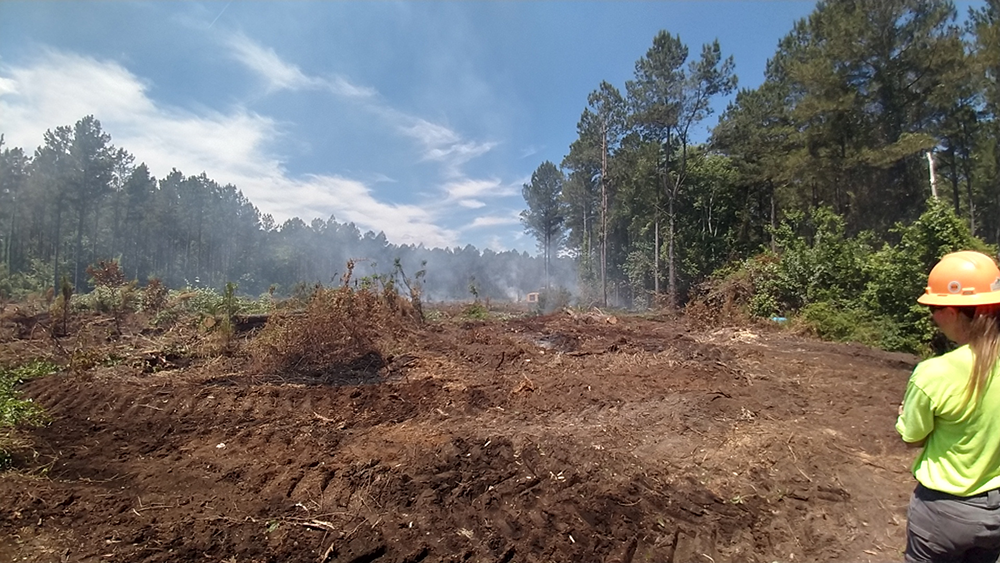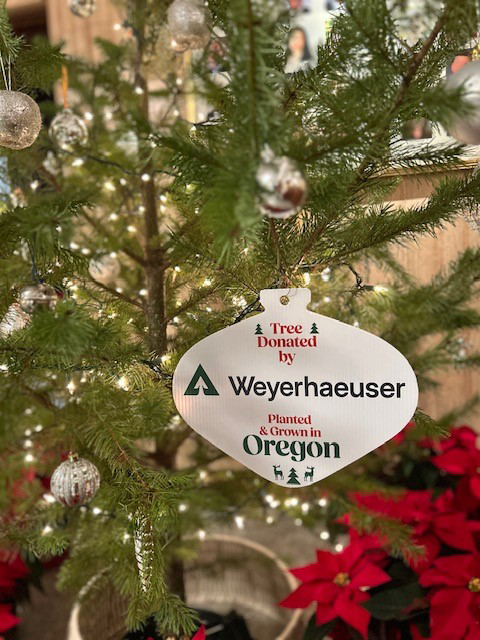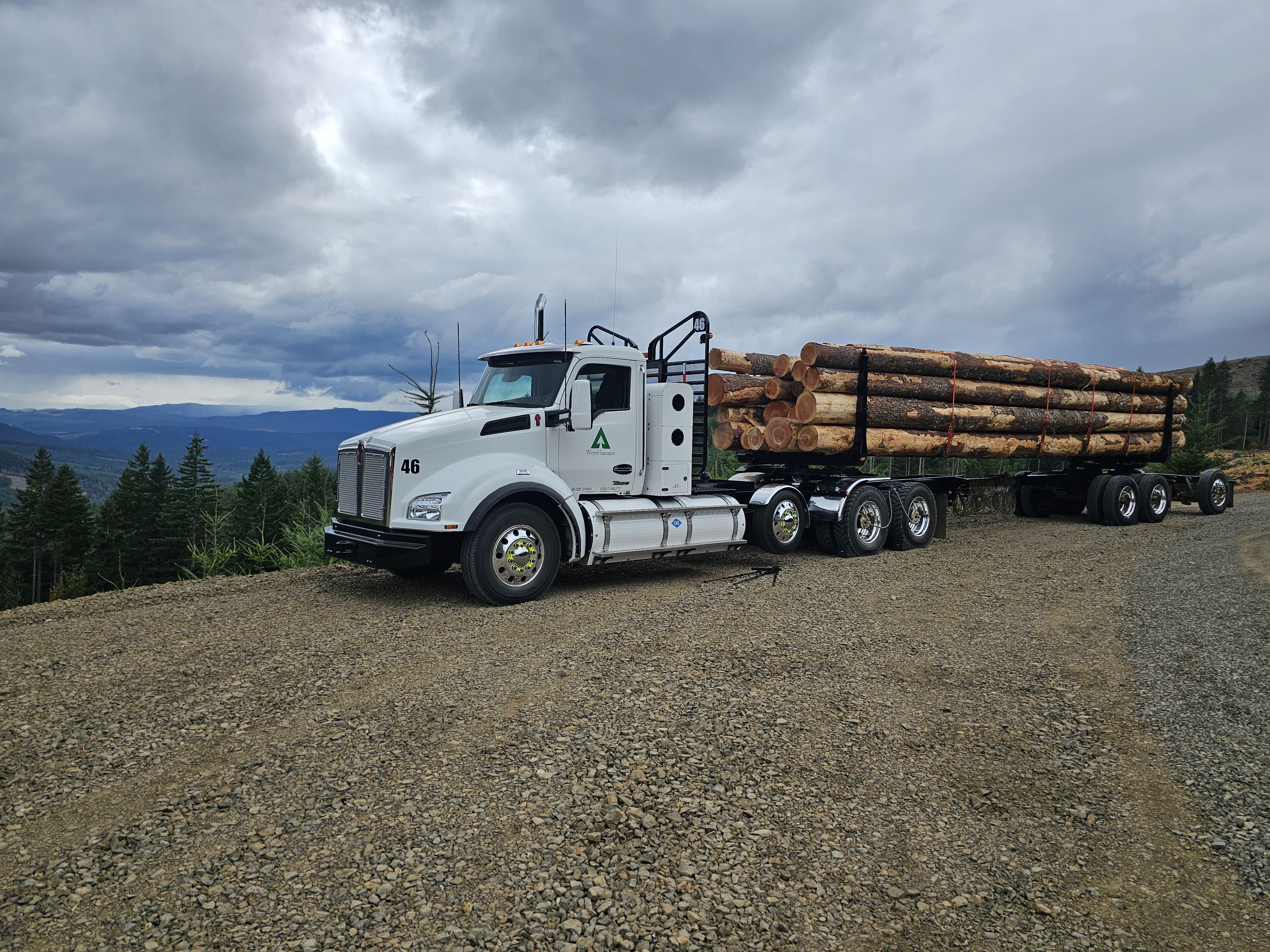
Smoke rises from the fire. "Eastern North Carolina contains areas of soils that contain high percentages of peat or muck and are commonly referred to as organic soils," Scott says.
On Saturday, May 3, a routine equipment delivery turned into an emergency response. Contractor Greg Broadway and his team from G&H Broadway Logging, Inc. had just arrived at our Craven 16 - Big-P South tract in Craven County, North Carolina, to move a cutter to the site for a thinning job.
They quickly noticed something unusual: smoke rising from a stand of 21-year-old loblolly pine.
“We’re so lucky they just happened to be there on a weekend, when our team wasn’t working,” says Bill Castelloe, planning and roads forester based in our Vanceboro office. “If they hadn’t spotted the fire, it could have devoured hundreds or potentially thousands of acres.”
Without hesitation, Greg’s crew sprang into action. They bladed a containment line around the fire with two skidders and called in the incident.
A GROWING THREAT UNDERGROUND
Thanks to the Broadway team’s quick thinking, the fire was no longer spreading above the ground by the time Bill arrived on the scene. But it was still smoldering in the organic soil, eating away at the roots of the trees. Bill immediately called in additional resources, including firefighting contractors and the North Carolina Fire Service.
Initial efforts to extinguish the ground fire with pumps and hoses weren’t enough. As the risk of re-ignition and windthrow from weakened roots grew, Bill reached out to teammates Katie Hanway, planning and inventory manager; Leah Wood, harvest manager; and Scott Burroughs, land use forester, to formulate a plan.
“Some of the trees were standing on nothing but tap roots,” Scott says. “We knew it was only a matter of time before they began to fall, and then we wouldn’t be able to work safely in that area.”
This lightning-struck tree was found to be the source of the soil fire.
STRATEGIC SALVAGE FOR SAFETY
The team made the call to safely salvage the timber by clearcutting the stand.
“It was the best way to get value from the timber and create access to the burning soil,” Leah says. “Otherwise, the trees would have died, and we’d lose everything.”
Katie quickly approved the change, and the Broadway crew, already thinning nearby, moved in immediately. Each tree-length log was hosed down before leaving the burn area to ensure no embers were transported away.
“We had a pump going right there at the line,” Scott says. “Every load that came out was sprayed down as it passed.”
BURYING THE BURN
Once the harvest was complete, contractors from Triple B Land Management and Diamond City Farms moved in with excavators to dig out and turn the burning organic material. The team worked until they hit mineral soil with enough moisture to help suppress the fire. After a few days, the smoldering was extinguished.
“We’ve used this method before,” Bill says. “It saves time and manpower — and it’s a lot safer than trying to chase hotspots on foot with a hose.”
One final hotspot was detected and extinguished days later, and the site is now safe and stable for future regrowth. Though the burned logs were too damaged to be used for lumber, they were sold to a pulp mill, which salvaged some of their value.
After the stand on top of the fire was clearcut, excavators dug out and turned the burning organic soil, eventually extinguishing the fire.
A MODEL OF COLLABORATION
The team agrees that strong coordination across internal teams, contractors and the state was crucial to success.
“There were a lot of moving pieces,” Katie says. “From fire protection to harvest operations, to the state, to our contractors — everyone communicated clearly and stepped up.”
For Scott, the collective response to this fire was a reminder of how essential those relationships are.
“The contractor’s quick thinking and the trust built between him and Leah made this work,” Scott says. “Without that kind of partnership, the outcome could have looked very different.”
Even Bill, who has fought fires for 40 years in his career as a forester, won’t soon forget how quickly the pieces fell into place this time.
“We just acted on experience and did what had to be done, and it worked,” he says. “It shows how much we all care about this land and the future of our forests.”


